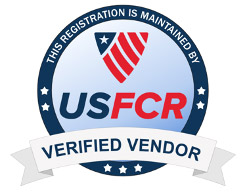FEDERAL RETIREMENT SYSTEMS
The federal government established two different retirement systems and a Thrift Savings Plan (TSP) for federal employees. As a federal employee you automatically participate in one of the two retirement systems. The first retirement system is the Civil Service Retirement System (CSRS). The second and current retirement system is the Federal Employees Retirement System (FERS).
CSRS
The Civil Service Retirement Act, which became effective on August 1, 1920, established a retirement system for certain Federal employees. It was replaced by the Federal Employees Retirement System (FERS) for Federal employees who first entered covered service on and after January 1, 1987.
The Civil Service Retirement System (CSRS) is a defined benefit, contributory retirement system. Employees share in the expense of the annuities to which they become entitled. CSRS covered employees contribute 7, 7 1/2 or 8 percent of pay to CSRS and, while they generally pay no Social Security retirement, survivor and disability (OASDI) tax, they must pay the Medicare tax (currently 1.45 percent of pay). The employing agency matches the employee’s CSRS contributions.
CSRS employees may increase their earned annuity by contributing up to 10 percent of the basic pay for their creditable service to a voluntary contribution account.
Employees may also contribute a portion of pay to the Thrift Savings Plan (TSP) . There is no Government contribution, but the employee contributions are tax-deferred.
FERS
Congress created the Federal Employees Retirement System (FERS) in 1986, and it became effective on January 1, 1987. Since that time, new Federal civilian employees who have retirement coverage are covered by FERS.
FERS is a retirement plan that provides benefits from three different sources: a Basic Benefit Plan, Social Security and the Thrift Savings Plan (TSP). Two of the three parts of FERS (Social Security and the TSP) can go with you to your next job if you leave the Federal Government before retirement. The Basic Benefit and Social Security parts of FERS require you to pay your share each pay period. Your agency withholds the cost of the Basic Benefit and Social Security from your pay as payroll deductions. Your agency pays its part too. Then, after you retire, you receive annuity payments each month for the rest of your life.
The TSP part of FERS is an account that your agency automatically sets up for you. Each pay period your agency deposits into your account amount equal to 1% of the basic pay you earn for the pay period. You can also make your own contributions to your TSP account and your agency will also make a matching contribution. These contributions are tax-deferred. The Thrift Savings Plan is administered by the Federal Retirement Thrift Investment Board.





